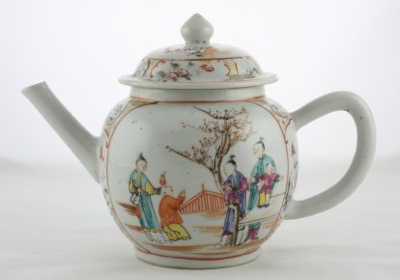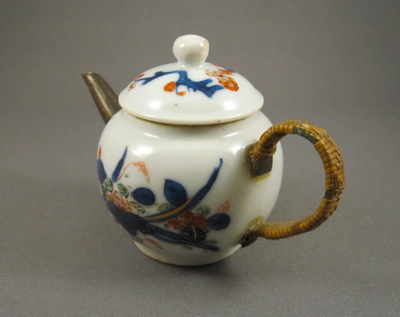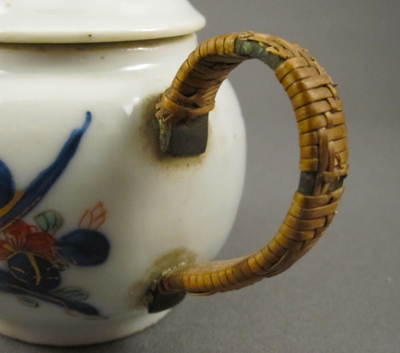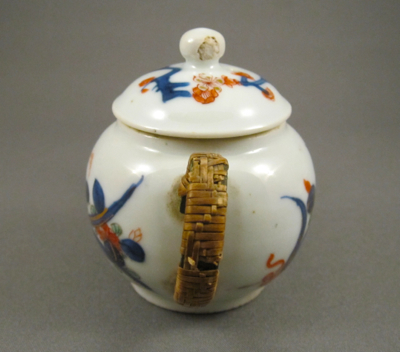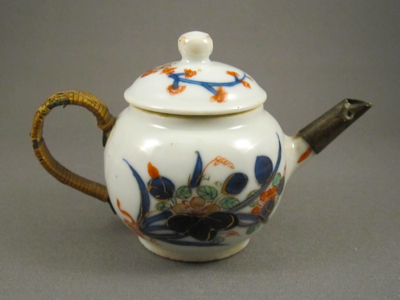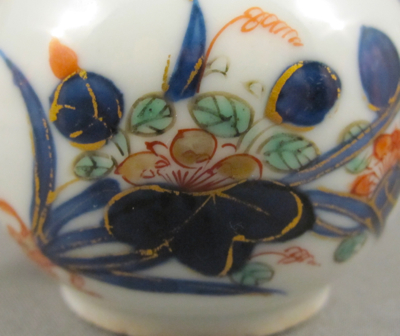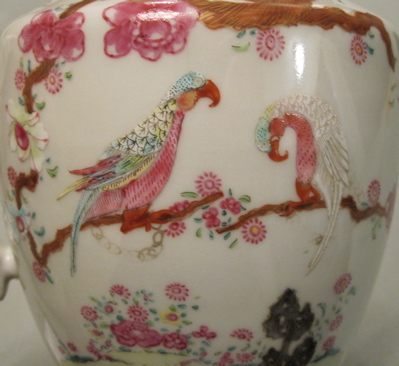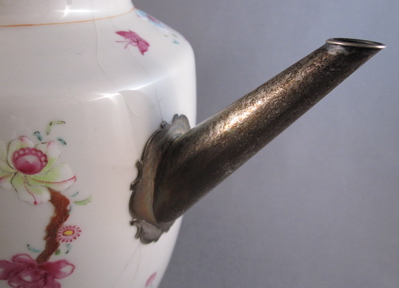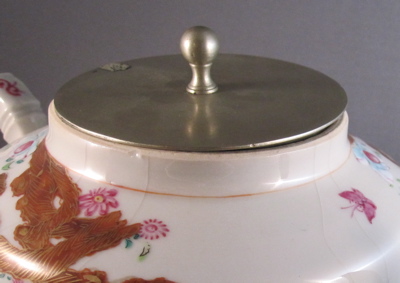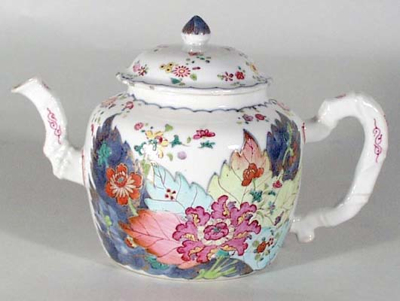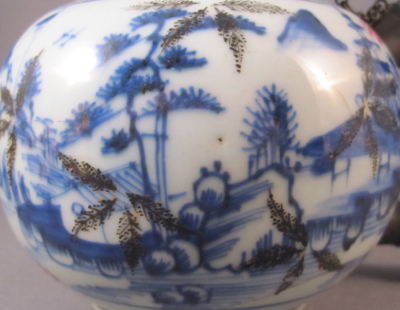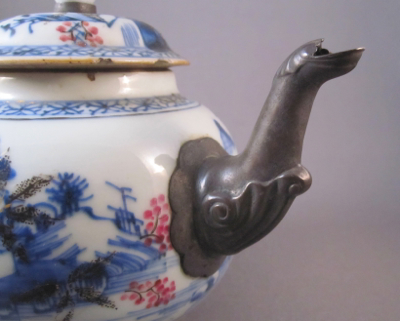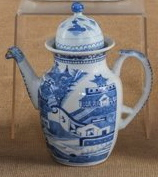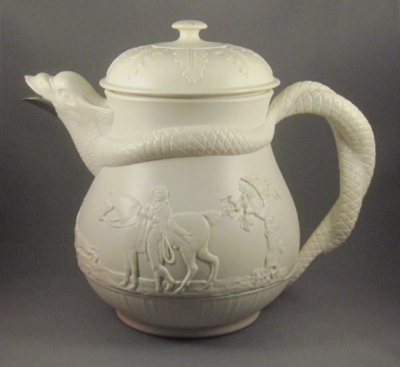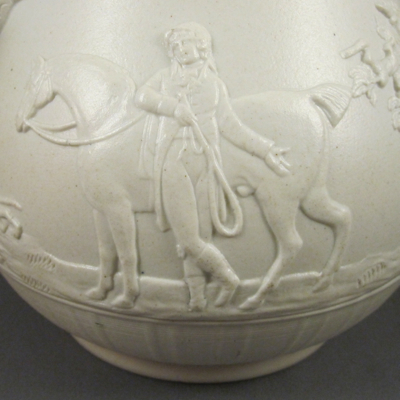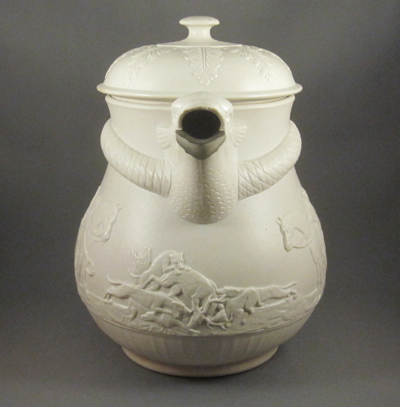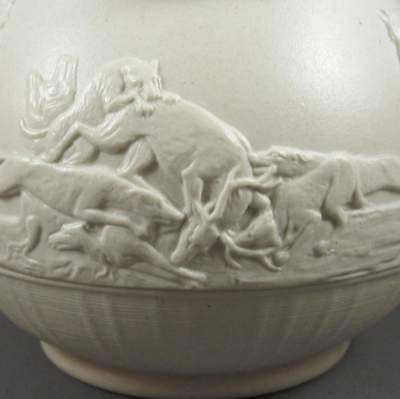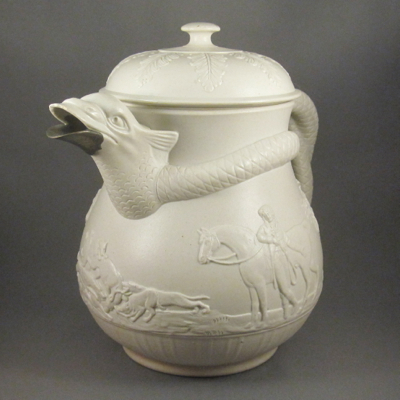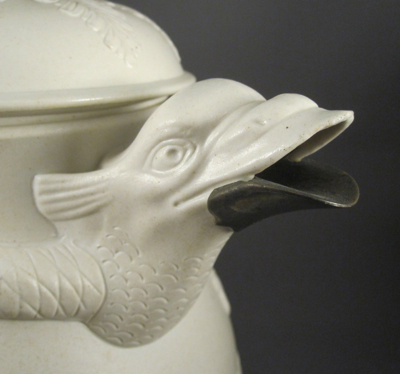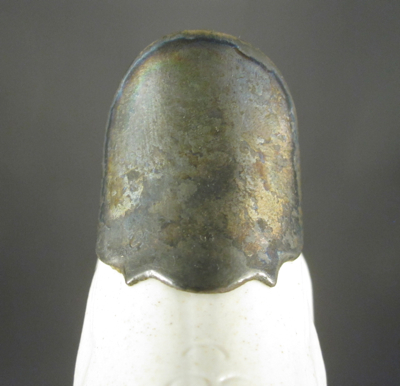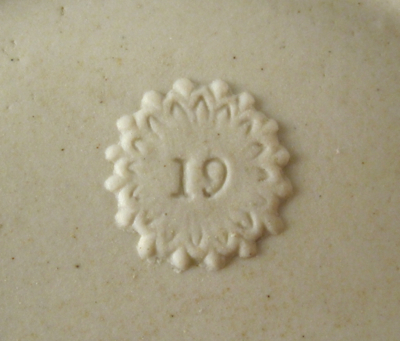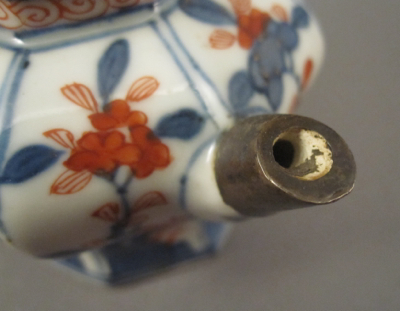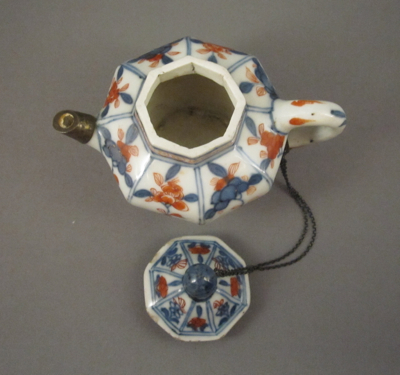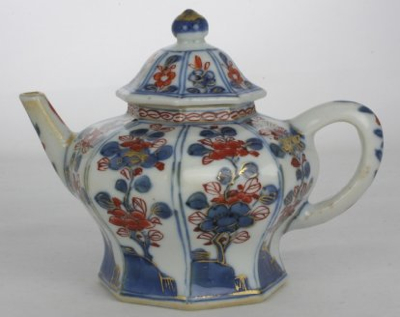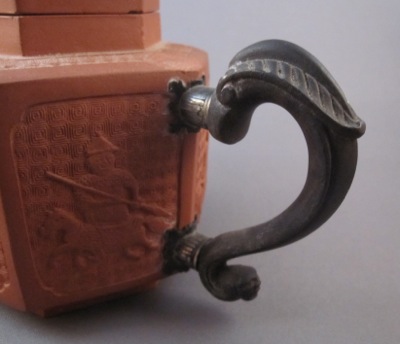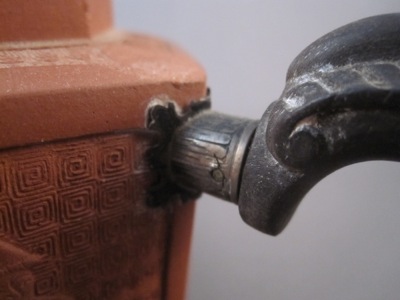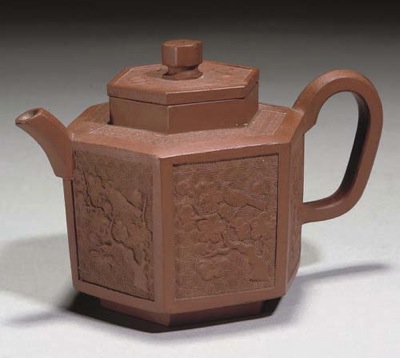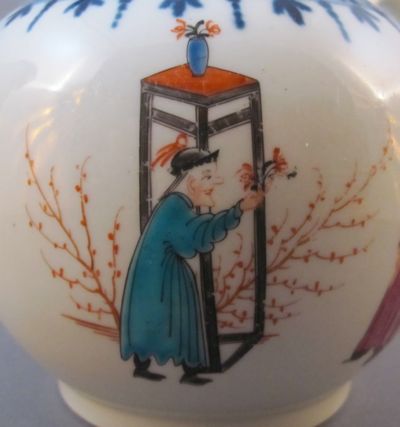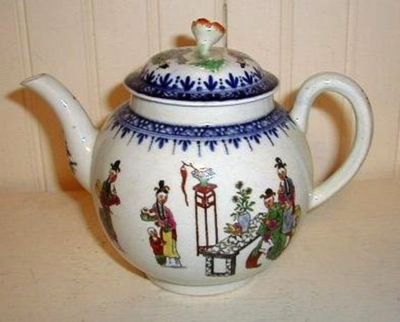This large globular form porcelain teapot was made in China during the middle of the 18th century and has not one but two 19th century inventive repairs. It measures 6″ high and 9-1/2″ wide from handle to spout. Both sides have the same Mandarin decoration in the famille rose palette, depicting a family scene in a garden with trees and distant mountains.
But what makes this piece so special is the unusual shaped silver replacement spout with a heart shaped back plate and the overscaled wood replacement handle in silver mounts. I imagine the wood handle was intended for a larger teapot, but it might have been the only option available at the time of repair. I found this teapot in the UK and I have seen the same replacement spout on another teapot of the same period, also in the UK. Although most antiques collectors would rather have an example of this teapot in “perfect” condition, I much prefer the whimsy and uniqueness of this survivor with its quirky embellishments.
This teapot of similar form and decoration suggests what the original handle and spout on my teapot might have looked like.
Photo courtesy of Pater Gratia Oriental Art






